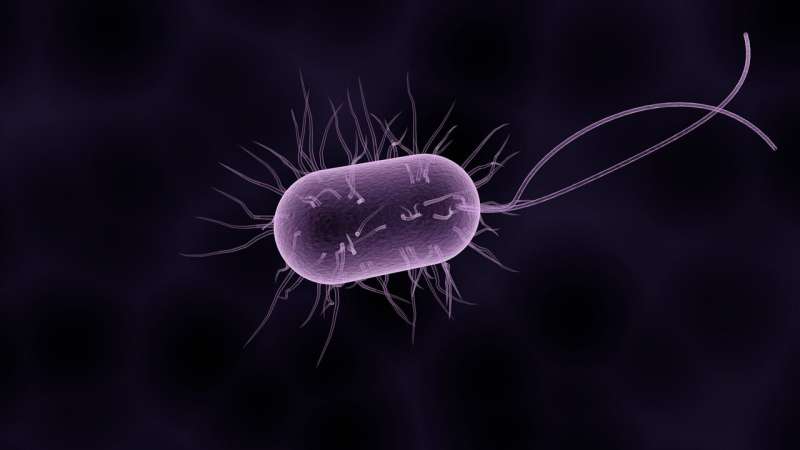

Microbes are hungry, all the time. They live everywhere, in enormous numbers. We might not see them with the naked eye, but they are in soils, lakes, oceans, hydrothermal vents, our homes, and even in and on our own bodies. And they don’t just hang out there. They are always eating. Altogether, they eat so much that they influence the elemental cycles of the entire planet.
Many of the microbes living on our planet do their utmost to keep these elemental cycles running in perfect balance. The fact of the matter is, though, that human interventions have significantly shifted the balance of more than one of them.
That sounds rather grim—and in part it is. It is time for a change. The key to change might lie in the simple trait that we share with every living organism on Earth. Everything needs food, from the microscopically small to the biggest blue whales. For microbes, food can include pretty much anything. Some microbes feed on apples; others prefer milk sugars (lactose) and help us make yogurt and cheese; and many, many microbes like the taste of waste.
This is extremely handy when it comes to cleaning our sewage water, for example. Billions of microbes in wastewater treatment plants happily gobble up all the nutrients in the water that’s flushed down our drains. This reduces our risk of getting sick and helps improve surface water quality. Pretty amazing, right?
Some microbes on our planet can turn their food into our fuels. They, too, feed on waste. For four years, I have studied fuel-producing microbes that eat carbon monoxide—a highly toxic, flammable gas that is generated, among other things, during steel production. Currently, the steel industry produces approximately 2 billion tons of steel per year, and carbon monoxide comprises between 20% and 30% of their waste gases. That waste carbon monoxide is currently burned to produce carbon dioxide. It is less toxic, but still quite harmful. However, carbon monoxide-consuming microbes could turn these vast quantities of waste gas into green fuel.
Tiny chemists
The carbon monoxide-consuming microbes that I studied during my Ph.D. can produce ethanol, a biofuel that has already been blended into normal fuels for several decades to make them a bit greener.
However, most of the world’s bioethanol is produced from food crops. This has provoked debate about prioritizing fuel over food—should we really be using crops to power our cars, when a significant part of the world’s population is starving?
Luckily, our tiny carbon monoxide-eating friends can make ethanol from waste gases. I investigated how to push them to make as much ethanol as possible, as quickly as possible.
To study these little microbes, I let them grow in 3-liter glass vessels called bioreactors. Each bioreactor contained bubbles of precious carbon monoxide that my microbes use as a source of food. I controlled how much carbon monoxide they got to eat and how fast they were growing. I could add extra food supplies or compare how the microbes responded to sudden shocks of carbon monoxide or a continuous, stable stream of it. With all of this control, I could test the limits of the carbon monoxide-eating capacities of my microbes.
But even to carbon monoxide-eating microbes, carbon monoxide can be toxic. In essence, this is because they can’t really choose whether they want to eat the carbon monoxide or not. Carbon monoxide is kind of a bully. If it’s there, they have to eat it, just like Miss Trunchbull forcing poor Bruce to eat the entire chocolate cake in Roald Dahl’s “Matilda.” Much like Bruce, though, carbon monoxide eaters are resilient. If the carbon monoxide pressure around them gets too high, they deal with it by turning the carbon monoxide into ethanol. Conveniently so, because this means that if we let these microbes grow at high carbon monoxide pressures, they will make lots of ethanol for us.
This is actually scalable in the real world too. A US-based company called LanzaTech is turning steel mill off-gas and other waste streams into bioethanol in full-scale factories. All of that is made possible by microbes, tiny little chemists that we cannot even see with the naked eye: “Recycling carbon with biology,” as LanzaTech states.
Microbes are small. But they can effect enormous change and help us move back towards a more circular society that turns waste back into value. It’s time to join them in the battle.
Provided by
The Conversation
This article is republished from The Conversation under a Creative Commons license. Read the original article.![]()
Citation:
Meet the microbes that transform toxic carbon monoxide into valuable biofuel (2024, October 7)
retrieved 8 October 2024
from https://phys.org/news/2024-10-microbes-toxic-carbon-monoxide-valuable.html
This document is subject to copyright. Apart from any fair dealing for the purpose of private study or research, no
part may be reproduced without the written permission. The content is provided for information purposes only.